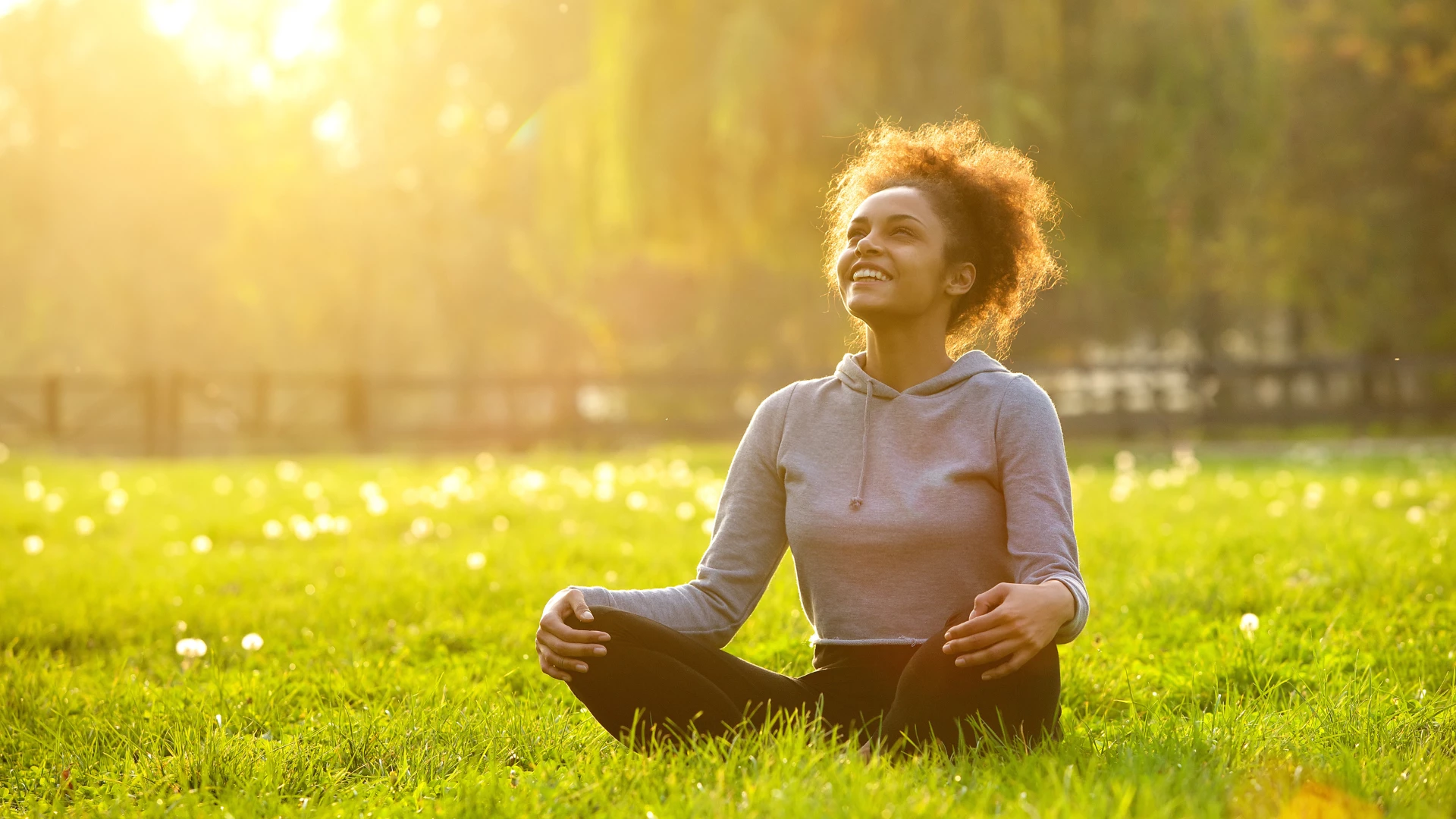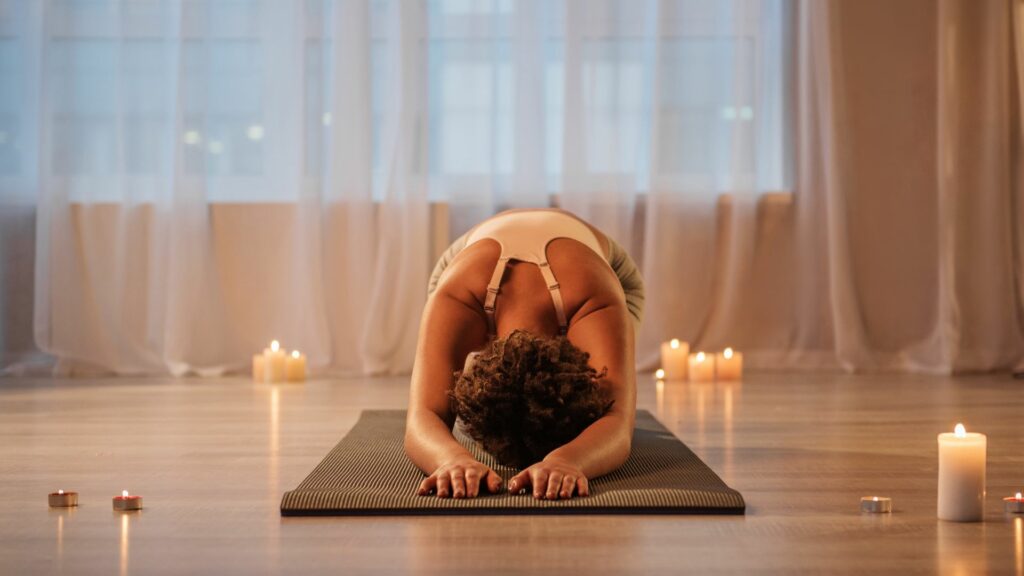5 Types of Rest That Can Renew Your Energies

Article At A Glance
What types of rest do you need most? In this article, we dive into the 5 basic forms of rest. Read on to discover how to feel fully recharged and ready to take on life again.
In Viniyoga, we often say that the remedy we choose should match the type of problem the student experiences. When someone is dealing with a structural issue, yoga asana would be the obvious place to begin our work. When the issue is physiological, breath and energy work are particularly important. And when we are dealing with a mental challenge, meditation, and self-study would be most useful, and so on. Saundra Dalton-Smith, in her book Sacred Rest: Recover Your Life, Renew Your Energy, Restore Your Sanity applies the same principle to the 5 different kinds of rest we need depending on what kind of tired we are. A couple of weeks ago, we discussed physical and mental rest, and this week let’s cover sensory, emotional, social, creative, and spiritual rest. What types of rest might you need?
5 Types of Rest: Sensory, Emotional, Social, Creative, and Spiritual
1. Sensory Rest: How to Resist Overload
The first type of rest is sensory rest. Our senses are the channels through which we experience the outside world. That world can be bright, noisy, smelly, and generally messy, and all that information gets delivered to your brain. Depending on the kind of environment you spend your days in, you might experience a sensory overload in one or more of your senses.
Saundra Dalton-Smith writes: “We accept the health benefits of avoiding junk food, but we rarely consider the effects of the junky cluttered sensory impressions we receive from our choices of entertainment and living environment.” Some signs of sensory overload could include acute sensitivity to lights and sounds, blurry vision, headaches or fatigue, food cravings, aversion to being touched, or dulling of your sensory input.
Give Your Senses a Break
The obvious remedy for sensory overload is to give your senses a break by simply closing your eyes, putting on noise- canceling headphones, going outside for some fresh air, tasting something that’s full of natural flavor, and giving hugs to your favorite people and pets.
canceling headphones, going outside for some fresh air, tasting something that’s full of natural flavor, and giving hugs to your favorite people and pets.
It can also involve moving from a more artificial to a more natural environment and experiencing nature through all our senses. Yoga also has some interesting techniques aimed at either giving your senses a break, like the practice of Pratyahara (retirement from the senses) or yoni mudra (right), or purifying the senses, like trataka (candle gazing) to purify your eyes, Bhramari (bee humming) to feel your own vibration, Mudras (hand gestures) to experience various tactile sensations, and so on.
And, of course, taking time to be still and quiet, even for a little bit, in an environment that feels soothing and peaceful gives your senses a much-needed rest.
2. Emotional Rest: How to Soothe Raw Emotions
We tend to perceive ourselves as thinking creatures who feel. But it’s the other way around—we are feeling creatures who think. Experiencing emotions is our way of reacting to our internal and external world. What is felt needs to be experienced. We might think that emotional overload usually comes from experiencing too many intense emotions in a short period of time, and it can certainly be the case. But we can get even more emotionally exhausted by shelving our emotions and denying their existence. Saundra Dalton-Smith writes: “Shelved emotions are the rawest kind. They are not tempered by exposure and are easily bruised on contact. So contact becomes the enemy, and we cocoon in our isolation.”
Some signs of emotional exhaustion include focusing on your failures and flaws, getting frustrated about the smallest mistakes, worrying excessively about mundane situations, hiding your true feelings, overexplaining yourself with apologies, and feeling generally frustrated about your life.
How to Manage Emotional Exhaustion

Emotions are contagious, and we are deeply influenced by the emotional states of those around us. Being selective in who you choose to spend your time with can help you manage your own emotional state. There is also a growing understanding of emotional labor that refers to the invisible work of keeping other people in your life balanced and content. If you end up doing all the heavy emotional lifting both at work and at home, it’s very easy to become emotionally exhausted. That is why it is important to address this issue with your partner and take concrete steps to divide emotional labor more equitably.
Yoga and Emotional Rest
In yoga, we approach our emotional management through the practice of Svadhyaya or self-study. Self-study can be done by reflection, meditation, journaling, or simply observing one’s thoughts and reactions in the moment to understand our reactivity patterns. Then we can gradually work on removing the emotional charges associated with them. The better we understand our reactions and trigger points, the better we can weather our emotional ups and downs.
You can also rest and recharge emotionally when you spend time in the company of people (or animals) who love you for who you are and with whom you do not need to hide or pretend. This is connected to the following type of rest—social rest.
3. Social Rest: Relational Support
It is necessary for us as humans to have close reciprocal relationships with other human beings. We rely on those relationships not just for social rest but for physiological and resulting emotional regulation. We seek co-regulation not just from friends and family members but also from our therapists, yoga teachers, checkout clerks, and all people in general.
When we do not get many opportunities to co-regulate with others, we become dysregulated. The original promise of social media was to give us a better sense of connection and expand our social circle.

However, nowadays, studies show that it’s more likely to make us feel more isolated and alone since many “connections” we experience online are superficial. But social media does succeed in creating more “social noise,” which can be exhausting. Some signs that you are experiencing social rest deficit might include feeling alone and detached from your family and friends, being attracted to people who mistreat you, hiding behind anonymous online relationships, and being unable to maintain close friendships.
Saundra Dalton-Smith writes: “Social rest is about making space for those relationships that revive you. The quality of those relationships is much more important than quantity.” These types of relationships need to be embraced and cultivated.
Reciprocity and Social Rest
The most important quality of those relationships is reciprocity. In her book Polyvagal Theory in Therapy, Deb Dana writes: “Reciprocity is a connection between people that is created in the back-and-forth communication between two autonomic nervous systems. It is the experience of heartfelt listening and responding. We are nourished in experiences of reciprocity, feeling the ebb and flow, giving and receiving, attunement, and resonance.” Your ability to get social rest depends on the quality of relationships you cultivate with your family, friends, coworkers, peers, and others. It works best when you build a close inner circle that gives you support for different facets of yourself, as a partner, a parent, a professional, a hobbyist, a member of an organization, or any other side of you that you wish to cultivate.
4. Creative Rest: Awaken Wonder
In her book Eat, Pray, Love, Elizabeth Gilbert explains her motivation to go abroad: “I need to marvel at something.” We all need to marvel at something, whether it’s art, music, nature, architecture, or anything else that we find beautiful and inspiring. Creative rest doesn’t mean you have to participate in a creative activity, like writing, painting, or composing. Saundra Dalton-Smith writes: “Creative rest is not about putting a demand on your creative ability; that’s not rest, that’s work. It’s the opposite. It’s allowing white space in your life and giving room for your creativity to show up. Creative rest lets you focus on your basic need for wonder.”

If your current occupation places great demands on your creative abilities, you might experience a creative rest deficit. Some signs of creative rest deficit include feeling uninspired, undervaluing your work, putting yourself last on your list of priorities, being unable to slow down and “smell the roses,” and engaging in self-destructive behaviors.
Try Something New
One of the best ways to give yourself creative rest is to change your scenery. Travel is great for that, but you don’t have to go far to find places and things that feed your sense of wonder. Simply doing something different from what you are used to and paying attention to your experience can help create that “white space” in which creativity can bloom. It also helps to give yourself permission to do fun and unexpected things throughout the day to keep your mind fresh. You can bring that playfulness to your yoga practice, as well, to make it light and joyful.
5. Spiritual Rest: What Inspires You?
The final type of rest is spiritual rest. Humans have a natural longing to build relationships, which includes a connection with something bigger than ourselves. What you choose to connect to is entirely up to you; it can be an official religion, your chosen deity, Mother Nature, the energy of the Universe, or the beauty of your cellular structure. Whatever is awe-inspiring to you can be a source of spiritual rest. Some signs that you might be experiencing a spiritual rest deficit may include a lack of motivation, feelings of helplessness and hopelessness, decreased satisfaction with your life and accomplishments, and a sense of distance and numbness.

In the yoga tradition, Ishvara is the name used to describe that higher power. Ishvara is described as pure consciousness that is beyond the cycle of birth and death or actions and their consequences. It is the seed of all knowledge and is a spiritual guide, even for the ancients. Surrendering to that source (Ishvara Pranidhana) is the most direct way to achieve Samadhi (realization of your True Nature). You can practice Ishvara Pranidhana through chanting, ritual, or prayer. These are the practices that can also help you feel more spiritually rested.
What Type of Rest Do You Need Today?
The type of rest you need on any given day depends on what kind of deficit you are experiencing. It helps to continuously monitor your energetic reserves and their fluctuations throughout the day to be able to choose an appropriate revitalizing activity. Yoga teaches us to become reflectively self-conscious of our inner experiences so that we could refuel our energy tanks before they get completely empty.
Saundra Dalton-Smith writes: “Life can be overwhelming, and it will keep coming at you. It doesn’t cease. You have to choose to slow it down. You have to decide to turn your energy back toward restoration.” We need to embrace rest as a necessary part of our self-care and savor every moment of it.
Also, read...
12 Tips for Better Sleep
12 Scientifically Proven Benefits of Meditation
Neglecting Your Hip Abductors and Adductors Can Mess Up Your Walk, Sleep and Balance
Related courses
Breath as Medicine: Yogic Breathing for Vital Aging
Yoga and Myofascial Release: Releasing Chronic Tension with the Bodymind Ballwork Method

Educated as a school teacher, Olga Kabel has been teaching yoga for over 14 years. She completed multiple Yoga Teacher Training Programs but discovered the strongest connection to the Krishnamacharya/ T.K.V. Desikachar lineage. She had studied with Gary Kraftsow and American Viniyoga Institute (2004-2006) and received her Viniyoga Teacher diploma in July 2006, becoming an AVI-certified Yoga Therapist in April 2011. Olga is a founder and managing director of Sequence Wiz— a web-based yoga sequence builder that assists yoga teachers and yoga therapists in creating and organizing yoga practices. It also features simple, informational articles on how to sequence yoga practices for maximum effectiveness. Olga strongly believes in the healing power of this ancient discipline on every level: physical, psychological, and spiritual. She strives to make yoga practices accessible to students of any age, physical ability, and medical history, specializing in helping her students relieve muscle aches and pains, manage stress and anxiety, and develop mental focus.



